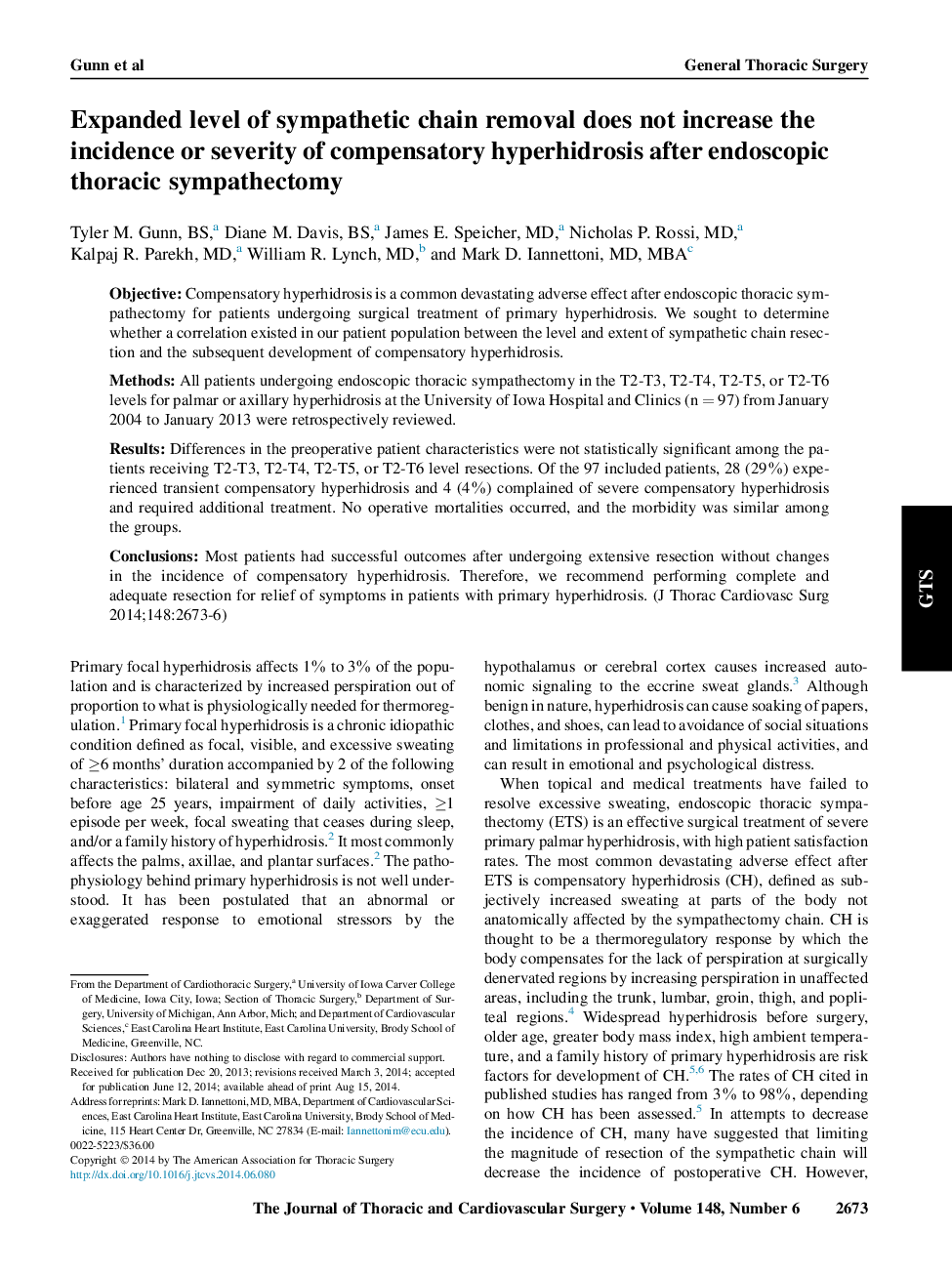| Article ID | Journal | Published Year | Pages | File Type |
|---|---|---|---|---|
| 5989737 | The Journal of Thoracic and Cardiovascular Surgery | 2014 | 4 Pages |
ObjectiveCompensatory hyperhidrosis is a common devastating adverse effect after endoscopic thoracic sympathectomy for patients undergoing surgical treatment of primary hyperhidrosis. We sought to determine whether a correlation existed in our patient population between the level and extent of sympathetic chain resection and the subsequent development of compensatory hyperhidrosis.MethodsAll patients undergoing endoscopic thoracic sympathectomy in the T2-T3, T2-T4, T2-T5, or T2-T6 levels for palmar or axillary hyperhidrosis at the University of Iowa Hospital and Clinics (n = 97) from January 2004 to January 2013 were retrospectively reviewed.ResultsDifferences in the preoperative patient characteristics were not statistically significant among the patients receiving T2-T3, T2-T4, T2-T5, or T2-T6 level resections. Of the 97 included patients, 28 (29%) experienced transient compensatory hyperhidrosis and 4 (4%) complained of severe compensatory hyperhidrosis and required additional treatment. No operative mortalities occurred, and the morbidity was similar among the groups.ConclusionsMost patients had successful outcomes after undergoing extensive resection without changes in the incidence of compensatory hyperhidrosis. Therefore, we recommend performing complete and adequate resection for relief of symptoms in patients with primary hyperhidrosis.
